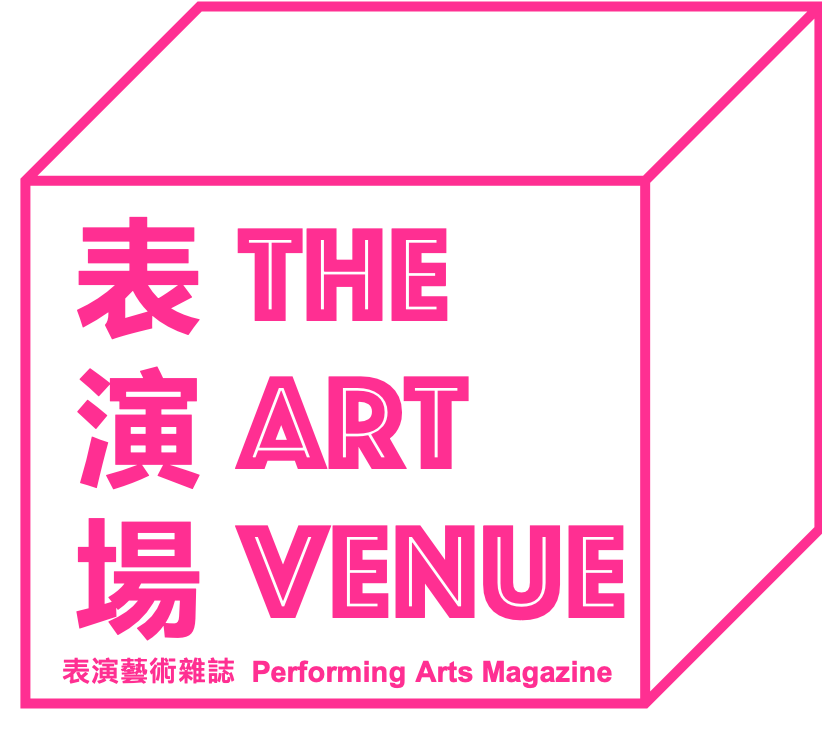表演場雙週刊第七期 (20190606) - 封面故事 The Art Venue Bi-Weekly Issue 007 - Cover Story
什麼是舞台:空間就是詩 - 安娜・維亞布洛
聯合策劃林奕華專訪
為什麼會與西九開始「What is Stage」 這個計劃?
第一位啟發我這方面興趣的是Rolf Borzik , 這位於1944年出生於波蘭,成長於德國的舞台美學家,是 Pina Bausch 七十年代很多重要作品的舞台設計者。 第一部衝擊我的,就是滿台椅子,看似不適合給舞者發揮的《Cafe Müller》。繼而是滿台泥土的《The Rite Of Spring》,滿台注水的 《Arien》,滿台雜物的《He Takes Her by the Hand and Leads Her into the Castle, the Others Follow》, 滿台秋天樹葉的《Duke Bluebeard's Castle》等等,沒有一個不標誌著「什 麼是舞台」的問號。
Rolf Bolzik 在1980年病逝,但他的影響無遠弗屆,我的第一個長篇創作《敎我如何愛四個不愛我的男人》(1989)的舞 台景觀,就烙有對他所提倡的一景到底,從現實取材又超乎現實的設計理 念的標記。
之後,我和已故香港舞台設計師陳友榮 合作了八年(2006-2013), 都是在這方向上探索,直至在書籍上發現我們 都很喜歡的一位德國舞台美學家 Anna Viebrock 和她的作品,便去信她的經理人,希望得到拜訪她的允許。這願望未能在陳友榮有生之年實現,卻驅使我 要把它完成。
2015年初,我在倫敦看了比利時導演 Ivo Van Hove 的作品《The View From The Bridge》,很被舞台上簡約但力道強大 的設計震動。它也是一景到底,不使用 傢俱,道具來重現劇中的客㕔(除了因 劇情需要出現的椅子),演員什至赤腳走在裏面,卻能把真實的感受十分具有 逼力的傳達給觀眾。同樣的理念一直被 我追求和努力實踐,因為我相信舞台 上的真實的意義,一半由導演創造, 一半是觀眾以自身的觀照來賦予。《A View From The Bridge》的舞台設計家是Jan Versweyweld,他對於空間的想法開放、多元,我相信不論是 否從事舞台設計的觀眾,見識了他的作品一定眼界大開。
我和西九的茹國烈常常有感當代華文 戲劇在創作上仍是重於言說多於開拓 觀眾視覺和空間的感受,重於模擬真實多於創造意境,於是向他建議把 Jan Versweyweld、Anna Viebrock 以及也 有著一脈相承理念的 Jan Pappelbaum 邀請來香港和大家交流。他肯首後,介紹了西九的戲劇主管劉祺豐和他的團隊給我認識,大家同意這可以是系列式節目,便從第一年做到今年的第三年。
前兩年的反應相當令人鼓舞。我們甚至已鎖定第四年的舞台設計家,她是從不在舞台上蓋房子(以三幅牆包圍的室内 空間)的 Katrin Brack 。
歐美劇場中的舞台美學發展千變萬化, 你覺得香港劇場同業要如何才能跟上他 們的步伐?
文化是時間孕育的果實,是以歐洲經歷 過的所有涓滴,才能出現植根當地土壤 的千變萬化。日常生活所見所聞,所思 所感,無不影響著作品的精神面貌,所以,不管歐洲舞台的設計多麼美妙, 如果硬抄照搬,它都只會擁有外表, 沒有靈魂。
反而通過了解歐洲舞台美學家們怎樣受 到歷史與文化的洗禮,了解他們如何產生設計的觀念,加以消化後用作參考, 之後萌芽的創意才是有機的、個人的。
對「What is Stage」的成果,你有甚麼 期望?
一,希望有一天我能把這幾年在「什麼 是舞台」學到的東西寫成書。二,希望自己的體會,愈來愈能打開自己也不知 道存在的潛力。三,「什麼是舞台」能一年一年做下去,然後,某一年,就是 介紹華文戲劇的舞台美學家。四,也是 我最期待的一項,任何一位觀眾,都能用優秀的舞台美學家的眼光來發現生活的無窮創意,無窮空間。
今年的主角 Anna Viebrock,她的舞台美學有甚麼特色,試介紹一兩個她的作 品,好嗎?
Viebrock 由1970年代開始投身舞台美學創作,成長期間,受柏林圍牆倒下的文化衝擊所影響,由第一次踏足東柏 林,在舊世界發現了新天地,她的舞台設計,便開始融合想象與回憶、並存與單一,使她所設計的空間充滿矛盾和曖 眜,感染力不在像真,而在氛圍。Anna Viebrock 說過,她最喜歡沒有目的的 在路上閒逛,讓四周有趣的事物吸引她 的目光,再讓她去挖掘被它們隱藏起來 的神秘,以至秘密。
所以舞台下的觀眾,也會感覺到有若 與 Anna 一同「漫遊」,隨時也會有所 發現。她最近導演(是的,她也導演, 並 兼任服裝設計)和負責舞台景觀的音樂 劇場作品《The House Of Usher》,就 能提供那樣的經驗。一個不容易界定是 什麼性質的「房屋」內,有女人獨處的空 間,隔了兩道牆就是男人的交際場景, 這兩個地方,是存在於同一的,抑或是 平行的時空?
Viebrock 就是這樣把情節上的懸念,應 用與提升到哲學性的思維上,並且留給 觀眾細細玩味。
What is Stage: Space as Poetry - Anna Viebrock
Interview with co-curator Low Kee Hong
Head of Theatre, Performing Arts,
West Kowloon Cultural District Authority
Why did West Kowloon start working on the 'What is Stage" project with Edward Lam?
The genesis of this programme came out of a series of discussions with Edward Lam back in 2015. With Edward and taking into account his long history of thinking in and around the idea of what is an art school, this led to creating some version of an atelier built around unpacking the practice of scenography for Hong Kong and the region. It evolved into a multi-year series that would feature a range of scenographers and artists who are at the forefront of contemporary practice in Europe and beyond. This became the What is Stage series currently in it’s third year and only befitting that we feature AnnaViebrock in Freespace during the opening year.
Featuring Anna Viebrock this year, could you highlight the aesthetics quality in her designs and introduce one or two of her works?
Anna Viebrock is a designer, director, visual artist, teacher and for me, one of the most extraordinary thinkers of our time. Her work with Swiss director and musician Christoph Marthaler for example, is both humorous and filled with gravity. The spaces she offers are always in a state of transforming, of becoming something else. To be surprised in the theatre is now a very rare experience and I think Anna Viebrock is a master at this. I still remember feeling completely breathless after seeing The Boat Is Leaking. The Captain Lied. for the Fondazione Prada at the Venice Biennale in 2017. The resultingmise-en-scene that Anna created at the historic palazzo of Ca’ Corner della Reginacame out of conversations with writer and filmmaker Alexander Kluge, artist Thomas Demand and curator Udo Kittelmann. As a visitor moving in and around the palazzo, you encounter what seems to be yesterday and today, where normality and catastrophe feels interchangeable and when extreme distress and never-ending hope is at once terrifying and comforting.
The aesthetics of theatre is developing diversely in Europe and the US, what do you think theatre makers in Hong Kong should do to catch up?
I don’t think it is about catching up to the aesthetic development in Europe or the US. Itis important that we find a language and vocabulary that speaks to our history that is at once vernacular and contemporary, that acknowledges our colonial past while also allowing us to reference more than just one set of cultures. So the important first step is to be able to think more deeply and with the necessary breadth. Hence, the more we see and unpack the practice of artists who inspire us, we find the confidence and gumption to begin playing with the complexities that define our contemporary experience.
What are your expected outcomes of the programme?
For me, I hope What is Stage is the site of inspiration where artists and audiences encounter the various elements of the platform and it encourages them to think and see things differently.
「什麼是舞台:空間就是詩」活動包括公開講座、演出放映及討論和藝術家 工作坊。講座及放映活動現正接受網上登記,詳情請瀏覽 www.westkowloon.hk/whatisstage
The programme opens in July with two public seminars, a series of screening and discussion, and a five-day artist workshop led by Anna Viebrock. Online registration is now open for the seminar and screening series. Please visit www.westkowloon.hk/whatisstage for more information.

